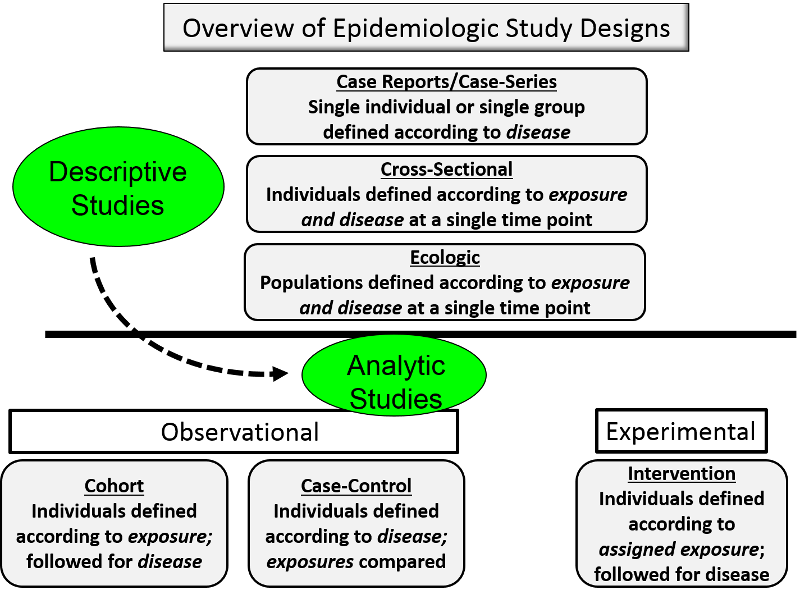Overview of Epidemiologic studies
The figure below provides a brief overview of epidemiologic studies. The descriptive studies that have already been discussed are listed in the top part: case reports and case series, cross-sectional studies, and ecologic studies. In addition to identifying new problems and keeping track of trends in a population, they also generate hypotheses that can be tested using one of the analytic studies shown at the bottom.

Note that cohort studies and case-control studies are observational studies, because investigators do not allocate exposure status. Some exposures are constituent (e.g., one's genome), some are behaviors and life style choices, and others are circumstantial, such as social, political, and economic determinants that affect health. None of these exposures are controlled by the investigators in observational studies; the investigators literally observe, collecting data on these exposures and on a variety of health outcomes. In contrast, intervention studies (also called clinical trials or experimental studies) are more like a true experiment in that the investigators assign subjects to a specific exposure (e.g., one or more treatment groups), and they are followed forward in time to record health outcomes of interest. Each of these analytic studies is useful in particular circumstances. Let's begin by discussing cohort studies.

